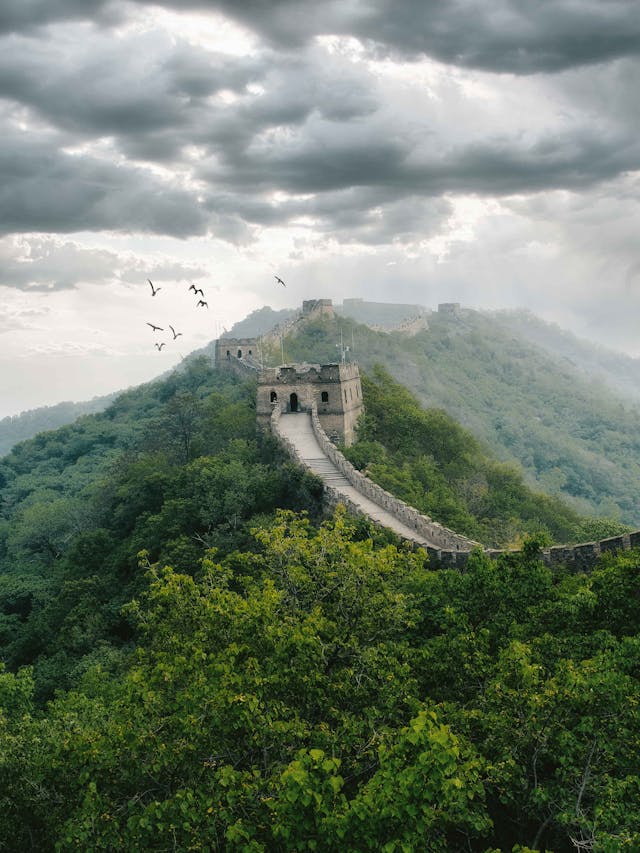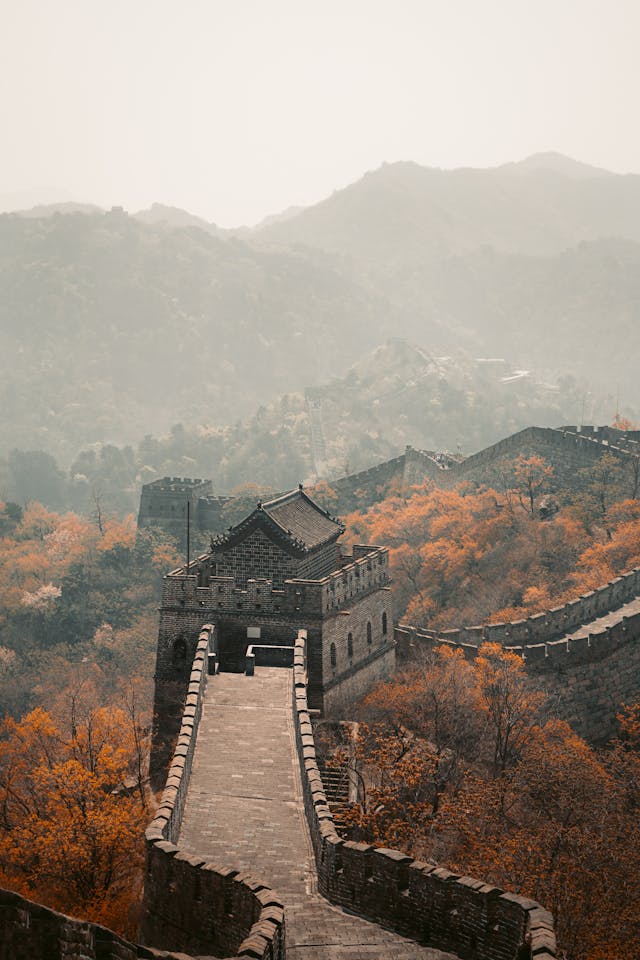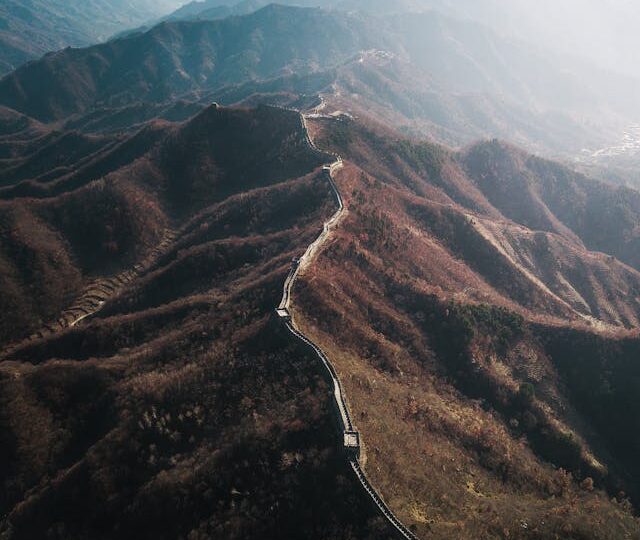A Brief History of the Great Wall of China
The Great Wall of China is not just a marvel of ancient engineering; it’s a symbol of China’s enduring strength and cultural heritage. Stretching over 13,000 miles, this colossal structure was built to protect the Chinese empire from invasions and raids. Construction began as early as the 7th century BC, with different dynasties contributing to the wall over time, but it was during the Ming Dynasty (1368–1644) that the wall as we know it today took shape. Made primarily of stone, brick, tamped earth, wood, and other materials, the wall is a testament to human ingenuity and perseverance.
The wall meanders through deserts, mountains, and plateaus, offering breathtaking views and a glimpse into the past. Each section of the Great Wall tells a different story, from the rugged sections in Gansu Province to the more well-preserved stretches near Beijing.
The Best Sections to Explore
While the Great Wall spans a vast distance, there are a few sections that are particularly popular with visitors:
- Badaling: The most famous and most visited section of the wall, Badaling is easily accessible from Beijing and offers a well-preserved and restored portion of the wall. This is a great spot for first-time visitors who want to experience the grandeur of the wall without venturing too far from the capital.
- Mutianyu: Slightly less crowded than Badaling, Mutianyu is another well-preserved section known for its beautiful scenery. The wall here is flanked by lush forests and is a bit steeper, offering a more challenging hike for those interested.
- Jinshanling: If you’re looking for a more authentic experience, Jinshanling is an excellent choice. This section is partly restored, allowing visitors to see both the reconstructed and original parts of the wall. It’s less crowded and offers stunning views, especially at sunrise and sunset.
- Jiankou: For the adventurous at heart, Jiankou is a wild, unrestored section of the wall that offers a more rugged and challenging hike. The wall here is steep and crumbling in places, making it ideal for those seeking an off-the-beaten-path experience.

When to Visit: The Best Times to Experience the Great Wall
Timing is everything when it comes to visiting the Great Wall of China. Each season offers a unique perspective, but some times of the year are particularly magical.
- Spring (March to May): Spring is one of the best times to visit the Great Wall. The weather is mild, and the mountains are awash with blooming flowers and lush greenery. This season offers a refreshing and vibrant backdrop for your visit. However, it’s also a popular time, so expect more tourists, especially during public holidays.
- Autumn (September to November): Autumn is perhaps the most picturesque time to visit the Great Wall. The weather is cool and comfortable, and the mountains are blanketed in rich hues of red, orange, and gold as the leaves change color. This season offers fewer crowds than summer, making it an ideal time for photography and peaceful hikes.
- Summer (June to August): Summer is the peak tourist season, with warmer temperatures and longer days. While the Great Wall is beautiful in the summer, the heat and crowds can be intense, especially at popular sections like Badaling. If you choose to visit in summer, consider going early in the morning or later in the evening to avoid the midday heat.
- Winter (December to February): For a truly unique experience, consider visiting the Great Wall in winter. The wall is often dusted with snow, creating a serene and almost otherworldly atmosphere. The crowds are minimal, and the cold air is crisp and invigorating. However, some sections of the wall may be closed due to icy conditions, so it’s essential to plan ahead and dress warmly.
Tips for a Memorable Visit
- Plan Your Trip Wisely: Consider the time of year, the section of the wall you wish to visit, and your physical fitness level. Some sections are more challenging and may require a higher level of endurance.
- Go Early or Stay Late: To avoid crowds, try to visit the Great Wall early in the morning or later in the afternoon. Not only will you have a more peaceful experience, but you’ll also be able to capture stunning photos during the golden hours.
- Wear Comfortable Shoes: The Great Wall is known for its steep steps and uneven terrain, so comfortable and sturdy footwear is a must.
- Bring Essentials: Carry water, snacks, sunscreen, and a hat, especially if you’re visiting during the warmer months. If you’re visiting in winter, be sure to dress in layers and bring gloves and a hat to stay warm.
- Respect the Heritage: The Great Wall is a UNESCO World Heritage site, so it’s essential to respect the site by not littering, vandalizing, or removing any stones or bricks.

Final Thoughts
Visiting the Great Wall of China is an unforgettable experience that offers a deep connection to history and a chance to marvel at one of the world’s most extraordinary architectural feats. Whether you visit in the vibrant spring, the colorful autumn, or the serene winter, the Great Wall is sure to leave you with lasting memories and a sense of awe.
At GertieBlu, we’re all about exploring the wonders of the world and sharing tips to make your travels more enjoyable. I hope this guide helps you plan your journey to one of history’s greatest landmarks!









